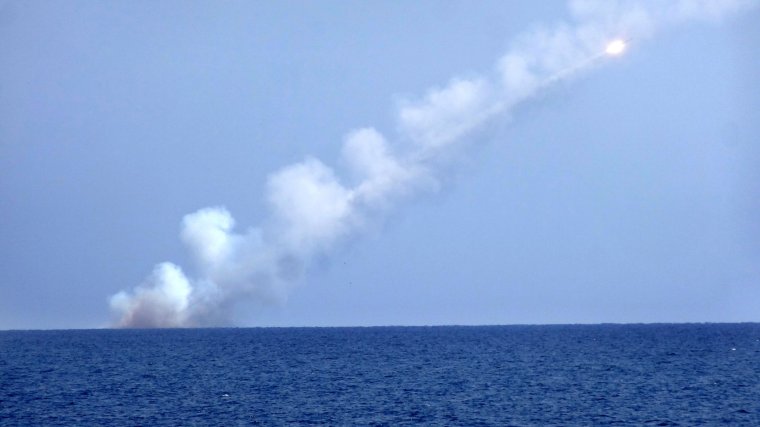Moscow said it tested a new nuclear-armed cruise missile. The bragging is a sign of weakness, not strength
The spectre of nuclear apocalypse is back on our screens. In Netflix’s A House of Dynamite, a US president must decide how to respond to a nuclear missile fired against it by an unidentified adversary.
Back in the real world, the US is engaged in its annual large-scale exercise to test its ability to respond to a nuclear attack. This comes hard on the heels of Russia’s own annual nuclear exercise last week.
Russia claimed its latest exercise was used to test new and advanced weapons, including a nuclear-powered, nuclear-armed cruise missile called Burevestnik. The missile was first announced in 2018, via an unsubtle simulated strike on Hawaii. Nato has named it Skyfall.
According to Russia, the missile can remain airborne longer than other nuclear-armed missiles because of its power source, and is capable of evading missile defence systems.
Vladimir Putin has long bragged about nuclear weapons as “a key tool for maintaining stability and protecting Russia’s sovereignty and territorial integrity”, and since the early days of his presidency has invested heavily in modernising Russia’s nuclear arsenal.
But if, when announcing the test, Putin had wanted to frighten Donald Trump, he will have been disappointed. In the aftermath, Trump calmly reminded Putin about the presence of US nuclear-armed submarines off the coast of Russia, and noted that the US also tests missiles. He said Putin should focus on ending the war in Ukraine.
Etienne Marcuz, a senior analyst on strategic armaments at a French think-tank, said the Burevestnik “whose cost is likely exorbitant, does not alter the strategic balance between Russia and its Western adversaries. It is, therefore, a strategic non-event”.
However, Putin’s announcement did remind us once again of Russia’s credible nuclear threat to the UK and other Nato countries. Staying calm and ready in response to his continued sabre-rattling is critical to avoiding a large-scale war. As George Orwell said in 1945, the atom bomb comes at the price of prolonging indefinitely a “peace that is no peace”.
Putin’s goals
On Sunday, Putin boasted that the “modernity” of Russia’s nuclear deterrent forces is “at the very highest level… at least on a higher level than that of all other nuclear states”.
There are various reasons for Putin’s brash attitude to nukes. George Kennan, a key figure in US Cold War containment policy, wrote that it is partly because of a “traditional and instinctive Russian sense of insecurity”. The Kremlin does appear genuinely fearful about the ability of the US to use its nuclear strike and missile defence strengths to coerce Russia into submission.
New “superweapons” such as Burevestnik, plus the long-range nuclear torpedo Poseidon and the Avangard hypersonic glide weapon, are designed to ensure that a Russian retaliatory nuclear strike would succeed.

Russian nuclear weapons also compensate for its weaker conventional military force, which has been badly damaged by Ukraine over three-and-a-half years of war and faces a lengthy rebuild. Over the next decade, Putin’s reliance on nuclear weapons will likely increase further as a result.
Russian nuclear scaremongering could also see off direct Western military intervention in Ukraine – or at least that is Putin’s likely goal. He may also have hoped that his missile announcement would coerce Trump into pausing sanctions on Russian oil, resume direct talks on Ukraine, and recommence arms control discussions. Russia is particularly concerned about the New Start treaty, which places limits on US and Russian intercontinental-range nuclear weapons and which expires in February 2026.
But as Keenan points out, Putin also uses nuclear weapons as an emotional crutch. Nuclear weapons allow Putin to portray Russia as a great power at the same level as the US, rebutting the late John McCain’s quip that Russia is merely a “gas station masquerading as a country”.
The UK must be prepared
Despite all this, the threat from Russia is not going away. Admiral Sir Tony Radakin, until recently the UK’s chief of defence staff, warned that we are entering a “third nuclear age”, characterised by “multiple and concurrent dilemmas, proliferating nuclear and disruptive technologies, and the almost total absence of the security architectures that went before”.
In this uncertain world, Radakin sought to put nuclear deterrence back at the heart of the UK security construct. Huge investments are planned. The UK will spend £15bn on a future sovereign nuclear warhead. Four new ballistic missile submarines are being built. At least a dozen new stealth jets will be able in the future to deliver tactical nuclear bombs.
Nato’s other nuclear powers – the US and France – are also modernising. Meanwhile, the UK’s nuclear co-operation with France is deepening, with the strengthening of nuclear deterrence matched with greater investment in conventional deterrence across Europe via long-range missiles.
The UK’s “nuclear IQ” will take time to rebuild after a considerable period of policy drift, under-investment, inter-service squabbles and tiresome bureaucratic battles. Unlike France, insiders tell me that the UK has not held a prime minister-led strategic deterrent exercise to test political decision-making and execution in recent memory.
It’s important to remember that Nato, at its core, is a nuclear alliance, and nuclear weapons are central to our security.
Putin likes to remind the world about Russia’s nuclear prowess. His latest moves show they remain both an emotional crutch for him and also a strength that he may increasingly rely on if other things continue to go south. This requires us to take Russian sabre-rattling seriously.
